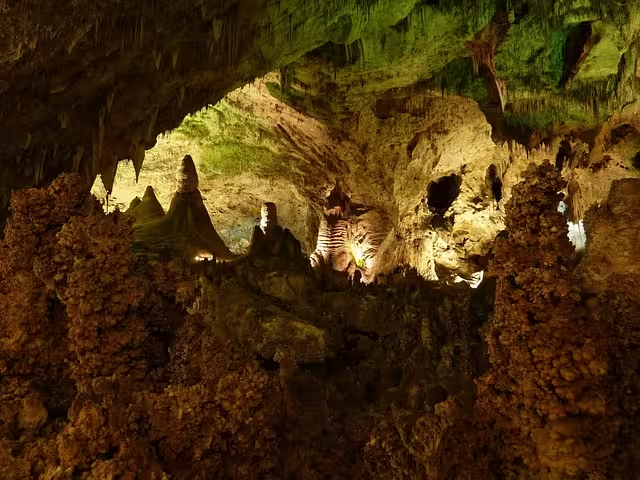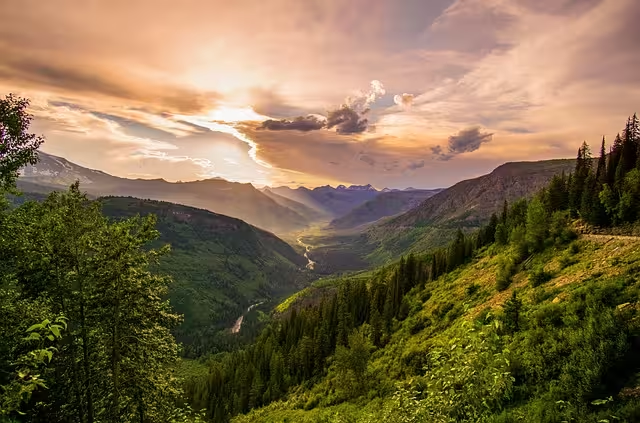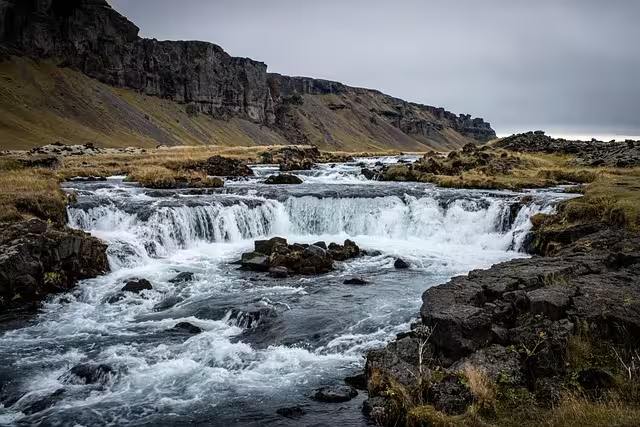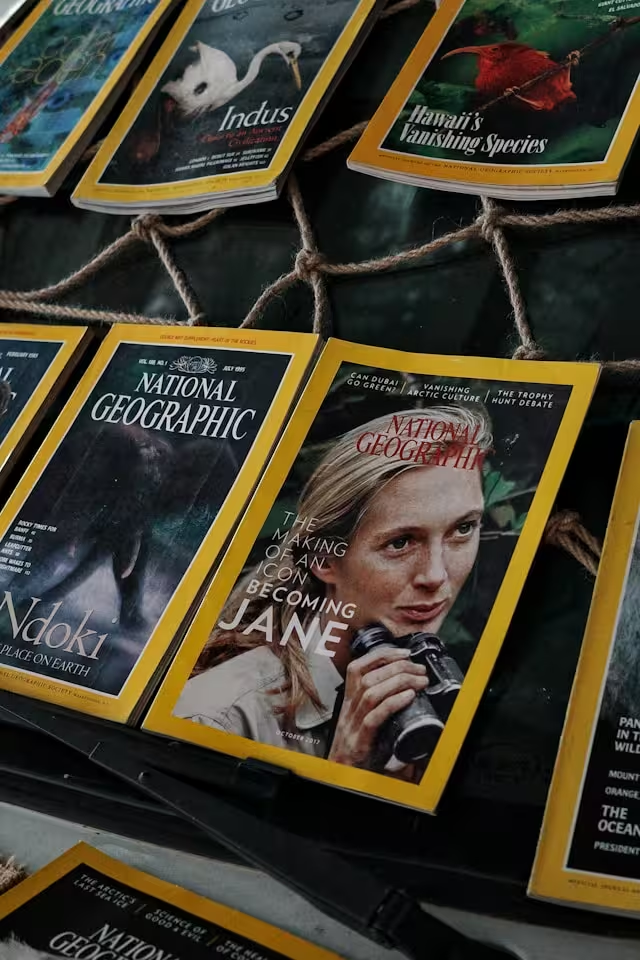The human brain is an ancient biological machine operating in a modern digital world. For hundreds of thousands of years, its survival depended on interpreting the patterns of nature: the curve of a river, the fractal branching of a tree, the vastness of a savanna. This deep, encoded connection is what the biologist E.O. Wilson termed the Biophilia Hypothesis, the innate human tendency to focus on and affiliate with life and life-like processes. In our current digital-first environment, the most resonant and effective online experiences do not fight this instinct; they leverage it.
This article dissects the architecture of successful online nature storytelling through a series of tactical case studies. We will reveal the technical, narrative, and design frameworks that transform passive screen time into profound engagement and create lasting impact. We will move beyond surface level content marketing to analyze the system level integration of nature based narratives, defining what separates fleeting content from a truly memorable digital ecosystem. The core of effective nature storytelling is this powerful fusion of ancient human psychology with modern technology.
Table of Contents
The Core Principles of Effective Digital Nature Narratives
To understand why certain examples of nature storytelling succeed, we must first analyze the foundational principles at play. It is not a matter of chance or simply having beautiful photography. Success is engineered through a deep understanding of human psychology and classic narrative structure. These two pillars, the scientific “why” and the artistic “how,” form the blueprint for any impactful digital experience centered on the natural world. This understanding is what allows creators to build platforms that don’t just show nature, but allow users to feel a genuine connection to it.
The Psychology of Connection: Why It Works
At its core, all effective nature storytelling taps into the biophilia hypothesis. This principle suggests that we are inherently drawn to the natural world because our brains evolved within it. When we see natural patterns, our minds experience a sense of ease and fascination. In web design, this translates into specific, actionable strategies. For example, the biophilic pattern of “Prospect” refers to our desire for an unimpeded view of our surroundings, which signaled safety to our ancestors. A website that uses a high resolution, full screen video of a sweeping landscape on its homepage is employing Prospect. It immediately gives the user a sense of calm and expansive possibility.
Another pattern is “Refuge,” our instinct to seek out protected spaces. On a website, a well structured layout with clear columns, ample white space, and defined content areas can create a feeling of cognitive refuge. It makes information feel safe and easy to process, unlike a cluttered or chaotic design. Finally, the “Mystery” pattern speaks to our desire to explore and discover what’s around the next corner. A website can create this with design elements that hint at more information, such as partially revealed images or intriguing links that promise to reveal more. This type of nature storytelling, woven into the very design of a site, works because it aligns with our deepest cognitive preferences.
The Narrative Framework: The ‘How’
While psychology explains why we are receptive to nature storytelling, a strong narrative framework explains how to hold our attention. The most enduring stories often follow a structure known as the Hero’s Journey. This classic framework can be applied directly to nature storytelling to create powerful and emotionally resonant content. The “hero” does not have to be a person; it can be an endangered species, a national park, or an entire ecosystem.
Consider a story about a wolf pack being reintroduced to a landscape. The pack is the hero. The “call to adventure” is their release into a new wilderness. They face trials and challenges, which could be anything from harsh winters to conflicts with local ranchers, representing the story’s antagonist. They may have a “guide” in the form of the scientists tracking them. The story reaches a climax when the pack successfully raises its first litter of pups, signifying a triumphant return and the restoration of a key part of the ecosystem.
By framing the facts within this classic structure, the information becomes more than just data; it becomes a saga. This approach to nature storytelling transforms a scientific report into something people can emotionally invest in, remember, and share.
Case Study 1: Patagonia – The Brand as Activist
Patagonia has become a benchmark for authentic brand identity, and its success is built on a foundation of relentless and genuine nature storytelling. The company’s approach is a masterclass in integrating a mission into every facet of its digital presence. They have successfully transitioned from being a retailer of outdoor goods to a platform for environmental activism, and their storytelling is the engine driving this identity. This is not simply content marketing; it is a core business function.
Analysis of “The Cleanest Line” and Film Initiatives
Patagonia’s blog, “The Cleanest Line,” and its documentary film division are the primary vectors for its nature storytelling. The blog posts are not product showcases. Instead, they are essays, field reports, and calls to action written by activists, scientists, and athletes. A post might detail the fight to remove a dam, the science behind regenerative agriculture, or the cultural importance of a threatened wilderness area. Their film initiatives, like the documentary “Artifishal,” take this a step further. The film is a feature length investigation into the damaging effects of fish hatcheries. This is a bold move that directly critiques an industry, demonstrating that their commitment to environmentalism is not just a marketing angle.
This nature storytelling strategy works because it is rooted in authenticity. The narrative is consistent: protect the planet we love. Their technical implementation supports this. The website is clean, functional, and prioritizes imagery and text. The photography is stunning but raw, showing the grit and reality of outdoor life and activism, not just glossy, perfect landscapes. The user experience is designed to lead from the story to action.
An article about a threatened river will have a direct link to a petition to protect it. This seamless integration makes participation feel like a natural extension of being informed. In terms of SEO, this strategy allows Patagonia to capture traffic from users searching for environmental issues, not just “winter jackets.” They are building a community around shared values, which results in a level of brand loyalty that traditional advertising can never achieve. Their nature storytelling is successful because it is inseparable from their identity.
Case Study 2: National Geographic – The Multimedia Ecosystem
For over a century, National Geographic has been a leader in nature storytelling. As media has evolved, so have their methods. Today, their digital presence is a sprawling ecosystem of articles, videos, and highly interactive web experiences that set the industry standard for immersive, educational content. They excel at transforming complex scientific and historical data into compelling narratives that captivate a global audience. Their approach demonstrates how investing in technology can elevate nature storytelling from a passive to an active experience.
Deconstructing an Interactive Feature
A prime example of National Geographic’s prowess is their interactive web features, which often combine multiple technologies to create a single, cohesive experience. Imagine an online feature about the deep sea. Instead of just showing photos, it might use a technique called parallax scrolling. As a user scrolls down the page, they feel like they are descending through the ocean. The background layers move at a different speed than the foreground, creating a powerful illusion of depth. As they “descend,” different creatures appear, with clickable hotspots that reveal information, videos, and audio clips of the animals’ sounds.
This type of nature storytelling is powerful because it encourages exploration. The user is in control, choosing what to investigate further. Technically, these features often rely on advanced web technologies like WebGL to render 3D models of animals or environments directly in the browser. The narrative is structured around discovery, making the user feel like a scientist exploring a new frontier. This high level of interactivity significantly increases user engagement metrics like time on page and scroll depth. People stay longer because they are not just reading; they are participating in the story. National Geographic’s success proves that the future of digital nature storytelling lies in creating rich, multimedia ecosystems that reward curiosity.
Case Study 3: Google Arts & Culture – “The Hidden Worlds of the National Parks”

While some platforms use nature storytelling to inform or to advocate, Google’s “The Hidden Worlds of the National Parks” project uses it to transport. This virtual experience is a landmark achievement in making nature accessible to everyone, regardless of physical location or ability. It leverages immersive technology to create a sense of presence and wonder, demonstrating that a digital experience can evoke a genuine emotional response that echoes a real world visit. This project is a powerful example of how technology can bridge gaps and bring the beauty of the wild to a global audience.
A Technical and Experiential Breakdown
“The Hidden Worlds of the National Parks” is a guided virtual tour of several U.S. National Parks, including Kenai Fjords in Alaska and the Carlsbad Caverns in New Mexico. The experience is built around 360 degree video and spatial audio. This means users can look in any direction, just as they would in real life, and the sounds they hear will change based on where they are “looking.” The tours are narrated by actual park rangers, which adds a layer of authenticity and human connection. The narrative is one of guided discovery, as the ranger points out interesting features and shares their personal connection to the place.
From a biophilic design perspective, this project is fascinating. It triggers powerful biophilic responses even though the user knows the experience is digital. The sweeping views from a glacier in Alaska trigger the “Prospect” response, giving a sense of awe and safety. Exploring the tight corners of a cavern triggers “Mystery,” activating our innate curiosity. The technical implementation is key to this success. The high definition video and accurate sound design create a high fidelity simulation that feels incredibly real.
This form of nature storytelling is not about presenting facts but about creating a feeling. It shows that immersive technologies like virtual reality offer a new, powerful frontier for creating the deep emotional resonance that lies at the heart of all great nature storytelling.
Case Study 4: The Guardian – Data-Driven Environmental Journalism

Effective nature storytelling is not always about pristine landscapes or charismatic animals. Sometimes, the most powerful stories are told with data. The Guardian, a British news organization, has established itself as a leader in data driven environmental journalism. Their work demonstrates that complex issues like climate change and biodiversity loss can be made understandable and urgent through the innovative visualization of data. Their approach is less about emotion in the traditional sense and more about conveying the undeniable scale and reality of the environmental crisis.
Analysis of Climate Change Series
The Guardian’s series on topics like carbon emissions or global temperature rise often use a technique called “scrollytelling.” As the reader scrolls through an article, the visuals on the screen change and animate to match the text. For example, a line graph showing the rise in CO2 levels might draw itself as you scroll, with key historical moments appearing as annotations. An article on deforestation might feature an interactive map where the user can see the loss of forest cover in a specific region over several decades.
This form of nature storytelling is effective because it makes abstract numbers concrete and visible. It is one thing to read that millions of tons of ice are melting; it is another to see a visualization of that ice disappearing from a map. The narrative strategy is one of revelation and urgency. The data builds a case, piece by piece, leading the reader to an inescapable conclusion. The technical implementation, using libraries like D3.js for data visualization, is sophisticated but always serves the story. The design is clean and puts the data front and center.
The impact of this approach is evident. It arms readers with knowledge and a clear understanding of the problem. It proves that a well designed chart can be one of the most powerful tools in the arsenal of modern nature storytelling.
Implementing Successful Nature Storytelling: A Strategic Guide
Understanding the principles and learning from successful case studies is the first step. The next is implementation. Creating your own successful nature storytelling requires a strategic, methodical approach. It is a process of defining your core message, choosing the right tools, designing with intent, and measuring what truly matters. This guide provides a clear, actionable framework for any brand, organization, or individual looking to create meaningful digital connections to the natural world.
Step 1: Isolate Your Core Narrative
Before you write a single line of code or capture a single photo, you must identify the heart of your story. What is the one central message you want to convey? What emotion do you want your audience to feel: awe, urgency, hope, or anger? Who is the protagonist of your story? Is it a specific animal, an ecosystem, a scientist, or your own organization? Who or what is the antagonist? Clearly defining these elements will provide a strong foundation for every decision that follows. A weak or unclear narrative will result in an unfocused and ineffective final product. Strong nature storytelling always begins with a clear purpose.
Step 2: Select the Appropriate Medium
Once you have your narrative, you must choose the right medium to tell it. The medium must serve the story, not the other way around. Is your story a simple, powerful personal essay? A long form blog post with beautiful photos might be the perfect fit. Is your story about exploring a complex, physical space? An interactive map or a 360 degree video tour could be the most effective choice. Are you trying to explain a complex system with a lot of data? An interactive data visualization might be necessary. Do not default to the easiest or most familiar format. The most impactful nature storytelling happens when the medium is perfectly matched to the message.
Step 3: Integrate Biophilic Design Principles
This step is crucial and often overlooked. The design of your digital experience should reflect the nature based content it holds. This goes beyond simply using green and blue color palettes. Integrate biophilic patterns directly into your UI/UX design. Use layouts with natural, branching structures for your site navigation. Employ subtle background textures that mimic natural materials like wood or stone. Choose imagery and video that create feelings of Prospect, Refuge, and Mystery. The goal is to create a digital environment that feels like an echo of the natural world. This subconscious design language will enhance the user’s connection to your content and reinforce the core themes of your nature storytelling.
Step 4: Define and Measure Key Metrics
Finally, you need to know if your nature storytelling is working. Standard web metrics like page views and bounce rate are not enough. You need to measure engagement. Track metrics like time on page, scroll depth, and interaction rate with your interactive elements. Did users click on the informational hotspots? Did they watch the videos to completion? Most importantly, did they take the desired action?
If your story includes a call to action, such as signing a petition, making a donation, or sharing the content, that is your primary conversion metric. Success is not just about attracting eyeballs; it is about creating an impact. The right metrics will tell you if your nature storytelling is truly resonating with your audience.
The Future Trajectory: AI, Generative Art, and Real-Time Data
The field of digital nature storytelling is constantly evolving. As technology advances, new possibilities emerge for creating even more immersive, personalized, and impactful experiences. Looking ahead, several key technologies are poised to redefine what is possible. Artificial intelligence and generative art could be used to create unique, real time visualizations of environmental data. Imagine a website where the background is an abstract artwork that changes its colors and patterns based on live air quality data from around the world.
We will also see a rise in websites that integrate real time data streams. A website for a national park could feature a digital ecosystem that changes with the actual, current weather in the park, or shows the live migration patterns of tracked animals. This creates a living, breathing digital space that is perpetually new and connected to the real world. Hyper personalization will also play a role. A user’s journey through a nature story could be adapted based on their interests or past interactions, creating a unique narrative path for every individual. The future of nature storytelling will be more dynamic, more connected to real world data, and more deeply personal than ever before.
Conclusion
Upon analysis, it becomes clear that the most successful nature storytelling online is not the result of a single brilliant idea. It is the product of a sophisticated, multidisciplinary system. It is a deliberate fusion of a deep understanding of human psychology, the timeless power of robust narrative structure, and the elegant implementation of modern technology. The case studies of Patagonia, National Geographic, Google, and The Guardian each reveal a different facet of this truth. Whether through authentic activism, immersive exploration, data driven urgency, or virtual accessibility, the goal is the same: to forge a genuine connection between a user and the natural world through a digital medium.
The most effective digital strategies do not merely show you nature; they leverage design and technology to create an echo of the natural world itself. This approach fosters a connection that is not only profound and memorable, but one that is ultimately actionable, inspiring us to engage with, and protect, the planet we all call home. The ongoing evolution of this field presents a remarkable opportunity to continue innovating in the practice of nature storytelling.


